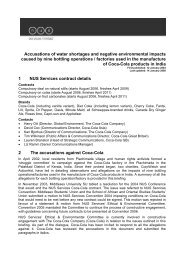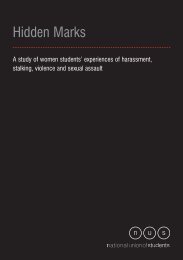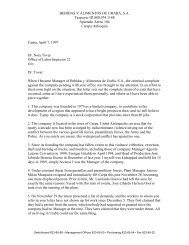No Place for Hate Crime - National Union of Students
No Place for Hate Crime - National Union of Students
No Place for Hate Crime - National Union of Students
You also want an ePaper? Increase the reach of your titles
YUMPU automatically turns print PDFs into web optimized ePapers that Google loves.
Recommendations<br />
The following recommendations are designed to<br />
address hate incidents and hate crime experienced<br />
by students in the UK, as well as the prejudice<br />
that motivates this behaviour. It is evident from the<br />
qualitative and quantitative research findings from<br />
which these recommendations were drawn that<br />
improvements are needed in:<br />
• the prevention <strong>of</strong> perpetrator behaviour<br />
•<br />
•<br />
support and services available to victims<br />
awareness, reporting and recording <strong>of</strong> hate crime<br />
and incidents.<br />
These recommendations are chiefly aimed at<br />
further and higher education institutions and sector<br />
organisations, although some will be pertinent to law<br />
en<strong>for</strong>cement practitioners and other agencies. We hope<br />
that all institutions will consider these recommendations<br />
and that they will help in the development <strong>of</strong> a<br />
cross-sector strategy to tackle hate and prejudice<br />
experienced by students across the UK.<br />
Prevention<br />
1. Demonstrate a firm commitment to equality and<br />
diversity<br />
The student population is composed <strong>of</strong> a diverse range<br />
<strong>of</strong> people, from all backgrounds, holding different<br />
ideas, viewpoints and opinions. It is important that<br />
these differences are respected, but equally that each<br />
and every individual feels they are able to study in an<br />
environment in which their rights, dignity and worth<br />
are upheld.<br />
It is there<strong>for</strong>e vital that institutions demonstrate a strong<br />
commitment towards equality and diversity and work<br />
to celebrate these values through clear and widely<br />
publicised codes <strong>of</strong> conduct, equality and diversity<br />
policies, and complaint and reporting procedures. All<br />
students should be made aware <strong>of</strong> their institution’s<br />
commitment to challenging and tackling prejudice on<br />
campus. Through student inductions, institution-wide<br />
and/or departmental handbooks, advice centres and<br />
students’ unions, students should be in<strong>for</strong>med <strong>of</strong> the<br />
conduct required <strong>of</strong> them and the support services<br />
available to those who have been victimised.<br />
2. Develop preventative and educational activity on<br />
prejudice and hate<br />
<strong>Hate</strong> crime is an un<strong>for</strong>tunate expression <strong>of</strong> negative<br />
stereotypes, prejudice, discrimination and inter-group<br />
tensions. Our research suggests that this type <strong>of</strong><br />
behaviour causes a cycle <strong>of</strong> suspicion and exclusion:<br />
the perpetrator is motivated by prejudice to target an<br />
individual and that action in turn negatively affects<br />
that victim’s acceptance and perception <strong>of</strong> other<br />
social groups.<br />
While it is important to tackle the more immediate and<br />
tangible goals <strong>of</strong> assisting and supporting victims as<br />
well as taking effective action against perpetrators,<br />
it is also important that long-term ef<strong>for</strong>ts are made<br />
to foster an inclusive ethos, in which each and every<br />
student has the right to express themselves without<br />
fear. Ensuring there is constructive dialogue, mutual<br />
respect and trust are paramount in this endeavour. By<br />
working to foster good relations among students and<br />
increase awareness <strong>of</strong> what constitutes a hate incident<br />
and the negative impact <strong>of</strong> this behaviour on the victim,<br />
institutions can reduce the prevalence <strong>of</strong> this behaviour<br />
on campus.<br />
To promote social cohesion within and outside the<br />
classroom, universities and colleges need to consider<br />
how to better integrate their student bodies. This could<br />
be achieved by increasing discussion and interactive<br />
work within the classroom, as well as by organising<br />
events <strong>for</strong> students <strong>of</strong> all backgrounds that celebrate<br />
diversity and encourage integration. In addition,<br />
institutions should ensure that, when appropriate,<br />
course curricula reflect diversity in sexual orientation<br />
and gender identity.<br />
3. Stop or mitigate against perpetrator behaviour<br />
It is evident from our research that victims and<br />
perpetrators alike <strong>of</strong>ten perceived behaviour<br />
constituting a hate incident to be socially acceptable.<br />
The consequences <strong>of</strong> this perception are two-fold: the<br />
perpetrator is encouraged to engage in these activities<br />
55
















